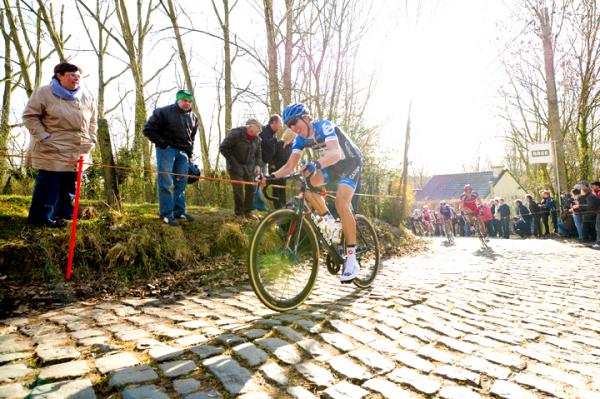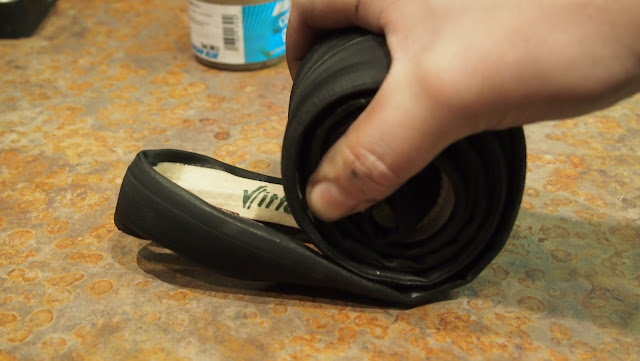So
here we are, 500m from the line in our leadout to the major classics of
2012. If you were me in this race
situation, this is where you would prematurely open your sprint—like I always
manage to do in our weekly rides—and fizzle out about 150m from the line. But not today! Today we are going to be patient—like a champ
and wait until the last second to jump into the wind. To get you primed for these career-making
Sundays, we are looking at the real essence of these races: who to watch for,
how the races might unfold, and who we are picking for the big wins.
 |
| The craziness that is The Ronde van Vlaanderen |
Flanders
is first up. The Ronde will be run this
Sunday, April 1st. Our
friends at NBCSports are televising it live at 8:30am—or you can opt for the
multifarious websites that stream the race.
I’ve watched plenty of these races on TV or the internet, but when
prepping for this post today, I wanted the expertise of someone a little more
experienced than me. So I asked
Cadence’s own Brian Walton for his opinion on Belgium’s greatest one day
race. In April of 1989, when I was gearing
up to turn 3 years old, Brian was racing The Ronde, so it’s safe to say he has
a wealth of knowledge and insight that is beyond my years—literally.
“Tour of Flanders will take place on Sunday April 1st and it's no
joke that the course has been drastically altered. The 254km 2012 edition will
feature 17 cobbled climbs and nine flat "koppen" sections; 26
"Hotspots" in total or as I like to say, 26 opportunities. Past winners have made comments on the 2012
course such as, "This is no longer the Ronde van Vlaanderen" Or my
favorite, "Three times up the Oude Kwaremont and Paterberg can blow you
away. The course didn't need to be made any harder." Dam, sounds like
"Must see TV on Sunday!" A true champion will emerge.
It was back in 1989 that I rode my first and only Tour of
Flanders. It was similar to my first Olympics in Seoul in 1988 in many ways, in
what I described for years as one of my "nonevents". I was a non-factor, a DNF, not even an
afterthought in the press. I finished my race at the 180km feed zone after
flatting, hopped in a car, and drove to Paris that night. I woke up, flew to
Spain early in the morning, and started Pays Basque at 1:30pm that same day
(first stage was a short hilly 150km) and then finished the 6 stages in five
days. Flew back to Paris and started Paris Roubaix on Sunday; a day after Pays
Basque ended. My Saturday recovery ride was reconing part of the course. Times
have changed and recovery, periodization and team management organization have
slightly evolved. Over 20 years later, I have now drawn on these experiences
and become a coach. I use these "negative" situations as
opportunities that can draw the best out of people, use their talents to their
greatest potential, implement a training program that's fun (and don't take
that word lightly at any level) and methodically analyze a race and finally,
get the best result out of an individual.
Over the past few years in writing articles for various journals
and websites, I have received many interesting e-mails from individuals
regarding very specific questions.
"Do you train with power?" Or one of my favorites,
"How do I increase my LT wattage? Is it better indoors or outside?"
My answer, "I don't know."
"Excuse me? Aren't you a Level One Coach, some past pro,
Olympic Silver Medalist and you don't know!?!"
"No, I don't."
"Why?"
"Because, until I get
to know the individual on a personal level and what they like and dislike,
forget the LT for the moment. Anyone
can read a book, get a plan and reach a good level of fitness. The value of a
coach and, in particular, a good or great coach, is that level of thinking and
the process involved that makes the difference. A coach needs to understand
each individual on a personal level before it's time to focus on the next level
of detail, where is the athlete currently and what are they trying to
accomplish short term and long term.
When I'm interviewing an athlete and asking them questions it usually
reverts back to "This race or that race and my best result was here and my
best LT was X watts but I only managed X watts in a test last week." OK, great. Then I make a few comments so the
athlete thinks this is the critical part of the conversation.
 |
| Dominique Rollin is looking to score a big result at this year's big classics |
I'm heading over Europe today to spend a little face time and fine
tune one of my most talented athletes that I have coached over the years,
Dominique Rollin (FDJ-BigMat), as he prepares for his first peak of the season
at Flanders and Paris Roubaix. Dom
lives in Girona like many of this generation of professional cyclists (insert,
smart pros learn from their past mentors and don't live in Belgium where the
weather is VERY unpredictable in the winter and early spring). At this stage of our coaching relationship
going on over 5 years, it's not about the tactics of the race or the watts he
is cranking out on the hills (over
400+watts on his peak 185 pound frame for over 30minutes) or peak power in his
sprint (I'll keep you guessing). "Just" face time, listening, a little
motor-pacing and recovery. One of the best rewards for me personally coaching
Dom, (he is a first rate chef), is that I get spoiled by his cooking.
As for the race and Walton's Way:
1. Pack positioning
before the "Hotspots" will separate the men from the boys.
2. Oude Kwaremont and Paterberg
will decide an iconic champion.
3. And for everyone,
before, during and after the race. "Control what you can control. The rest
is all noise."
It’s
easy to see why positioning will be so important in these races. Check out the steepest sections of the
Koppenberg:
Can
you imagine riding that in the rain? Since the middle and later half of the
peloton will most likely bunch up and end up walking—or at least coming to a
complete stop at one point or another.
This section of the Koppenberg is 19% and its one of the points of
separation for the group that will contain the winner.
So
whose wheel should you follow for the win? Here is a run-down of who could be
towards the front—not just on Sunday for The Ronde, but also for the following
week’s French counterpart Paris-Roubaix.
Tom Boonen has been on great form this season. Taking several wins in big races, including last weekend’s E3 Prijs Vlaanderen-Harelbeke as well as Gent-Wevelgem, Boonen has become a marked man for sure. It’s well deserved for the most consistent classics rider of the past 10 years.
Cancellara should never be overlooked. Thanks to his dominance in 2010, it’s likely that he never will be again. These races are suited to his style—riding everyone off his wheel. No complicated tactics or thinking required.
 |
| Breschel on the podium at Gent-Wevelgem--often cited as a pre-Flanders test of your fitness. |
Matti Breschel has had a rough couple of seasons recently, but has shown some really great form in his early classics campaign, with several top 10 finishes. 2012 could be the year Breschel finally scores that big win? (dramatic pause) Perhaps.
Peter Sagan is having a breakout year already. He is still very young, so it’s difficult to say what his real strengths and weaknesses are, but he has been there in the finale of several big spots this year, including Milan San Remo. Watch out…
Edvald Boasson-Hagen has piles of potential and he has already started to live up to that potential with some strong performances in big spots last year. He has been quiet so far this year in terms of results, but was there and looking strong in Gent-Wevelgem. He was boxed in, but still managed a decent result.
 |
| Sep Vanmarke attacks at the Omloop. |




























